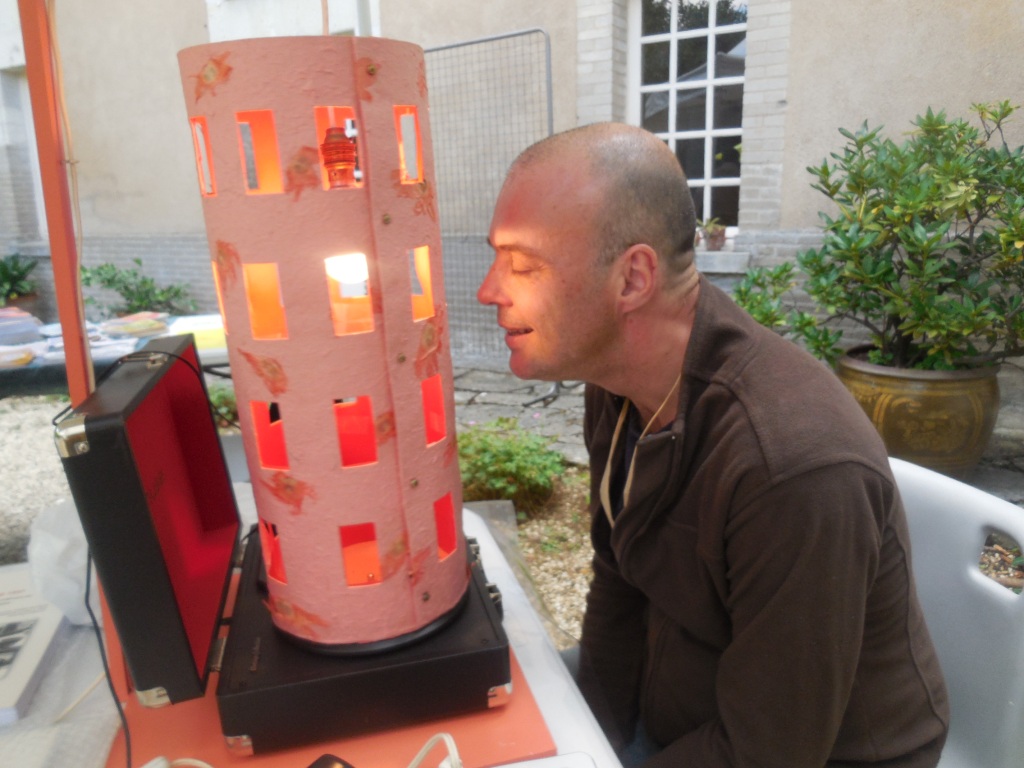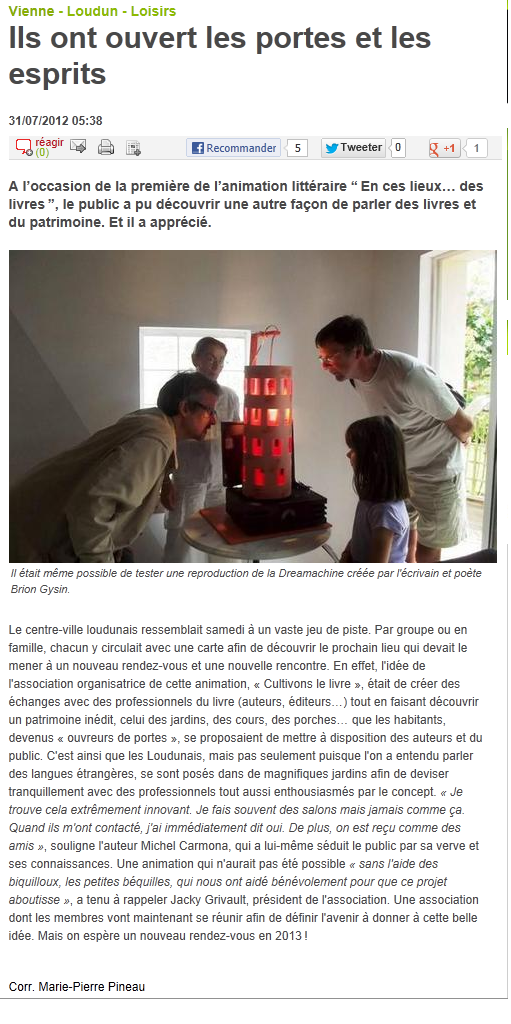http://www.franceculture.fr/emission-l-heure-du-documentaire-beat-hotel-2015-08-12
54 minutes
Beat Hôtel
Enregistrement
12.08.2015 - 17:00

Plaque du Beat Hotel © Radio France
Le 15 octobre 1957, Allen Ginsberg et Peter Orlovsky se présentaient à l’accueil d’un hôtel sans nom situé 9, rue Gît-le-Cœur, à deux pas du Quartier Latin. Madame Rachou les reçut. Veuve depuis l’accident de voiture de son mari survenu un an auparavant, elle tenait un établissement miteux, notoirement infesté de rongeurs, mais qui quelques mois plus tôt avait accueilli un auteur en rupture de ban avec l’Amérique raciste : Chester Himes.
Depuis le rachat de cette pension de quarante-deux chambres en 1933, les époux Rachou n’avaient pas effectué de travaux. Au 9, rue Gît-le-cœur, le confort était spartiate. Le système électrique défectueux. Les toilettes à la turque situées sur le palier. Les fenêtres des chambres donnaient sur la cage d’escalier. Une seule baignoire disponible. Et encore. L’eau chaude n’y était dispensée que trois fois par semaine. Aussi, l’établissement comportait un bistrot. Le café y était servi contre quarante centimes. La nuit, elle, était facturée un dollar.
Madame Rachou n’était pas regardante sur les mœurs de ses pensionnaires, pas plus qu’elle n’était à cheval sur les dates du paiement. Une ardoise s’effaçait en échange d’un manuscrit original. Ou bien d’une toile. Car cette femme « sympathique » était une amie des arts. Des décennies plus tôt, alors qu’elle vivait en ménage à Giverny, elle avait travaillé au sein d’une pension par laquelle étaient passés Monet et Pissarro. Alors…
Alors Ginsberg et sa dégaine de prophète sur la paille ? Bienvenue! Bien sûr, parions qu’elle ignorait tout des attaques pour « obscénités » dont son pensionnaire avait précédemment fait l’objet, Madame Rachou. Comme elle ferma les yeux sur les « activités » et les mœurs de la clique beat qui rejoignit Ginsberg dans son hôtel, dès 1958. Parmi elle, William Burroughs, fraîchement débarqué de Tanger, encore marqué par sa plongée dans l’héroïne s’installe dans la chambre n°23 du 9, rue Gît-le-cœur un 16 janvier. C’est là qu’il termine
Le Festin Nu.
Tandis qu’autour de lui, Greg Corso rédigeait
The Bomb, que Ted Joans élaborait la fresque
The Chick Who feels off a Rhino ; l’hôtel était le théâtre d’une formidable agitation artistique, mais aussi de mœurs particulières, Madame Rachou voyait au quotidien ses pensionnaires déguenillés écrire une étape de l’une des plus fiévreuses aventures artistiques du XXe siècle.
Avec :
Catherine Marthely
A travers un entretien réalisé avec l’écrivain
Gérard-Georges Lemaire
Ce docu-fiction retrace l’épopée du Beat Hôtel par la voix d’un témoin anonyme de ces années durant lesquelles les principales figures de la Beat Generation vécurent à Paris, et – pour certains - y créèrent plusieurs de leurs œuvres maîtresses.
Thème(s) :
Information|
Littérature Etrangère|
Société|
beat generation|
William Burroughs|
Allen Ginsberg
Lien(s)
La Beat Génération
Document(s)
 Kaddish
Kaddish :
Allen Ginsberg, Bourgois,
 Le festin nu
Le festin nu :
William Burroughs , L''imaginaire,
 Beat generation, une anthologie
Beat generation, une anthologie :
Gérard-Georges Lemaire , Al Dante,
 The Beat Hotel : Ginsberg, Burroughs, Corso in Paris, 1958-1963
The Beat Hotel : Ginsberg, Burroughs, Corso in Paris, 1958-1963 :
Barry Miles , Grove press,
 Beat Generation
Beat Generation :
Collectif Night and Day






